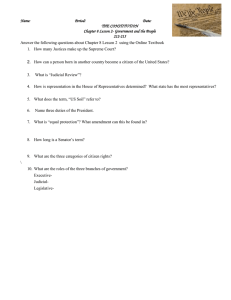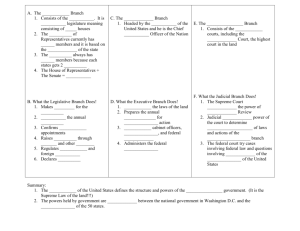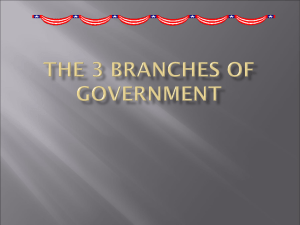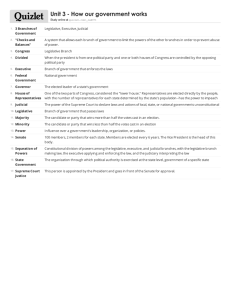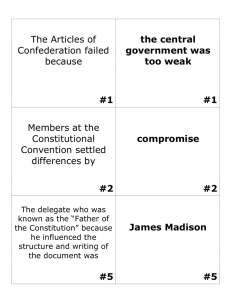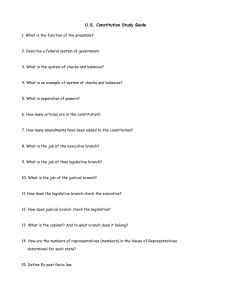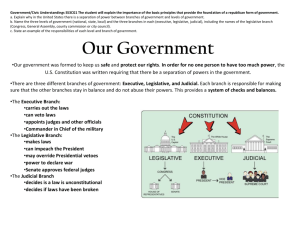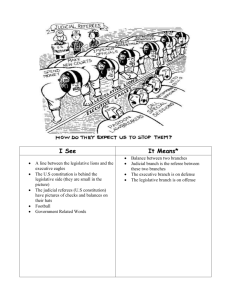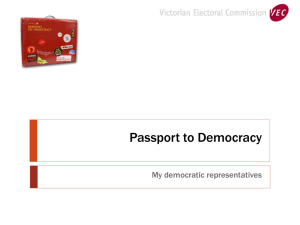Three Branches Study Guide with Answers
advertisement
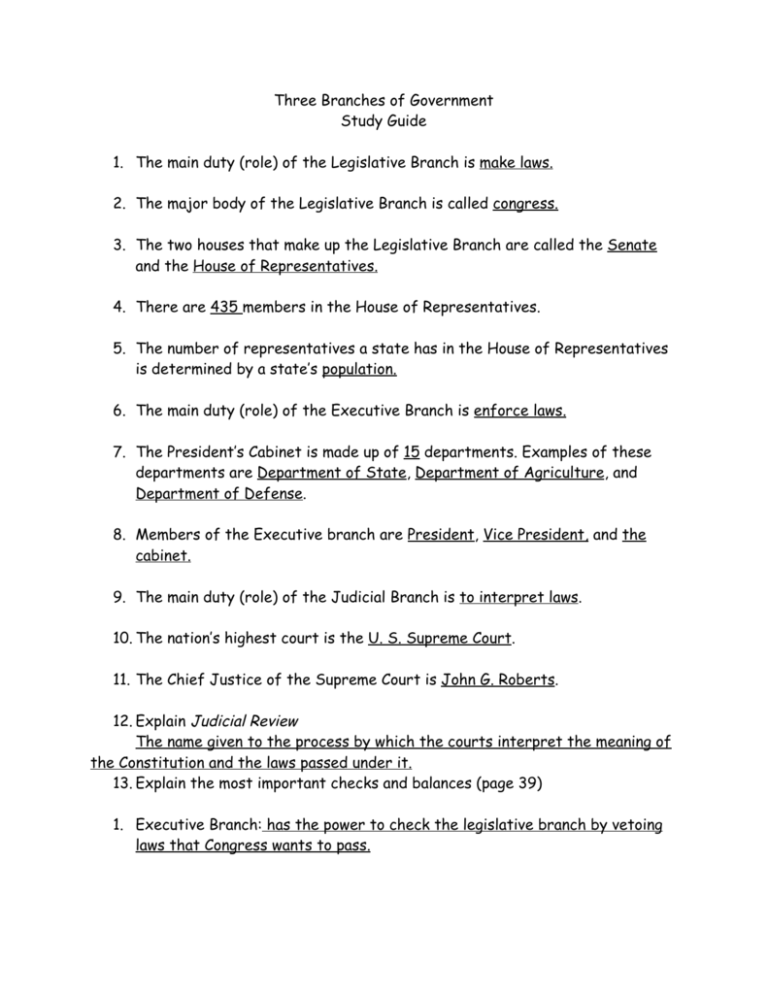
Three Branches of Government Study Guide 1. The main duty (role) of the Legislative Branch is make laws. 2. The major body of the Legislative Branch is called congress. 3. The two houses that make up the Legislative Branch are called the Senate and the House of Representatives. 4. There are 435 members in the House of Representatives. 5. The number of representatives a state has in the House of Representatives is determined by a state’s population. 6. The main duty (role) of the Executive Branch is enforce laws. 7. The President’s Cabinet is made up of 15 departments. Examples of these departments are Department of State, Department of Agriculture, and Department of Defense. 8. Members of the Executive branch are President, Vice President, and the cabinet. 9. The main duty (role) of the Judicial Branch is to interpret laws. 10. The nation’s highest court is the U. S. Supreme Court. 11. The Chief Justice of the Supreme Court is John G. Roberts. 12. Explain Judicial Review The name given to the process by which the courts interpret the meaning of the Constitution and the laws passed under it. 13. Explain the most important checks and balances (page 39) 1. Executive Branch: has the power to check the legislative branch by vetoing laws that Congress wants to pass. 2. Legislative Branch: may check the Executive Branch by passing laws over the veto by ⅔ vote in each house. 3. Judicial Branch: may check both the Legislative and Executive Branches by declaring laws unconstitutional. 14. The term for a Senator is 6 years. 15. The term for a Representative (House of Representatives) is 2 years. 16. The requirements for a Senator are: 30 years old, citizen for 9 years, and live in the state represented. 17. The requirements for a Representative (House of Representatives) are: 25 years old, citizen for 7 years, and live in the state represented. 18. The term for a Supreme Court Justice is life. 19. The requirements for President are: 35 years old, and be a natural-born citizen. 20.The term of the President is 4 years.
